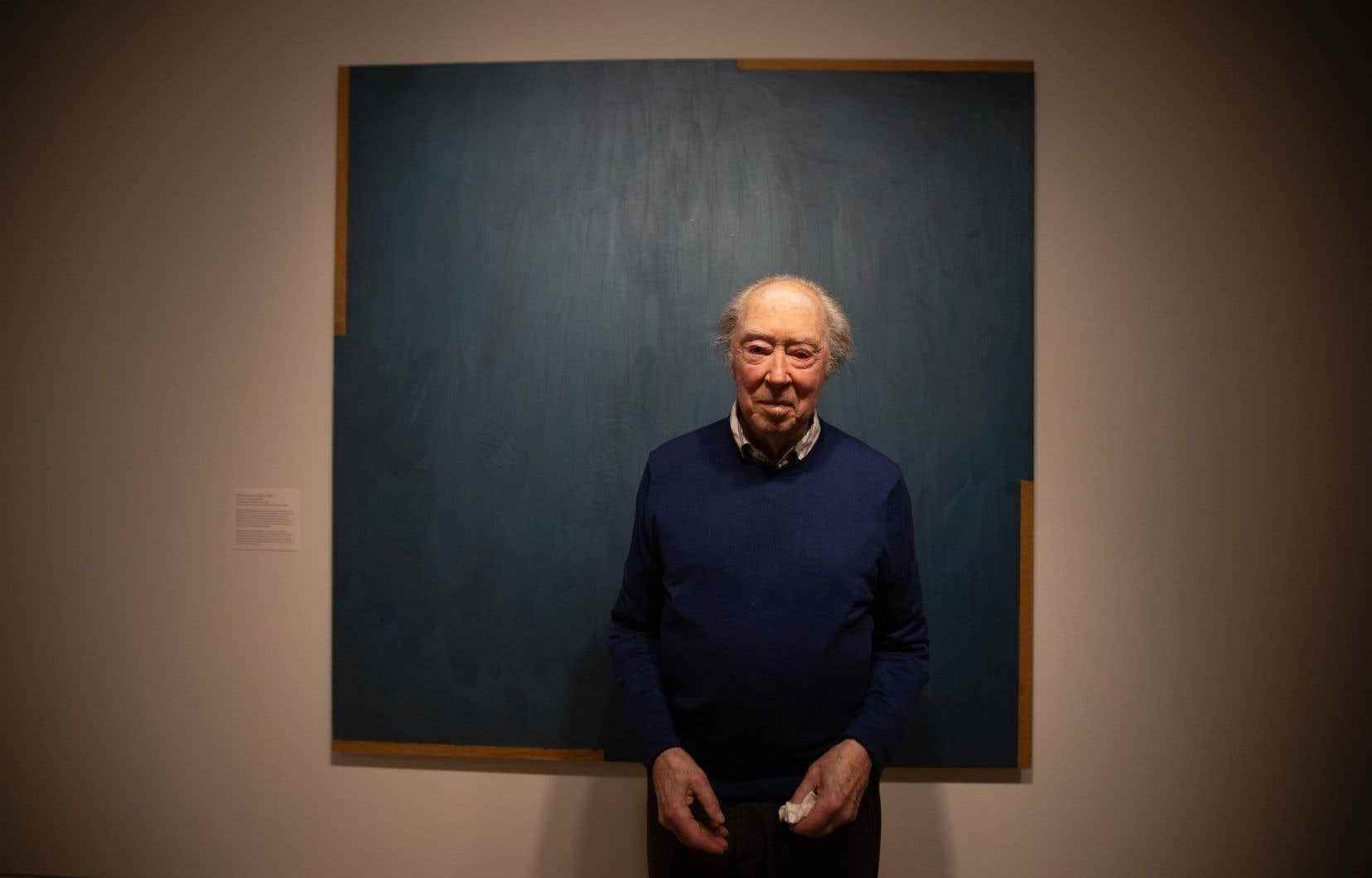Filmmaker, photographer, visual artist and musician Michael Snow died Thursday at the age of 94. He was one of the most influential Canadian avant-garde artists of his generation. The New York gallery Jack Shainman, which represents him, confirmed his death to the media on Friday.
“I’m devastated, I’m upset,” sighs Parisian gallery owner Martine Aboukayia, who has often presented her work. “Michael Snow is a genius,” she says. The art world will remember him as a free person who experienced incredible things. »
Born on December 10, 1929 in Toronto, he studied painting and sculpture in the queen city, before settling in New York for a few years. It was there that he was noticed by the experimental cinema community, including the Hungarian writer and director Jonas Mekas.
In 1967, he presented the medium-length film Wave length, which remains his most famous work to date. The film consists of a slow, 45-minute zoom-in, static shot that opens with an overview of the artist’s studio and ends with a close-up of a photograph of the sea hung on the wall. In 2001, critics of the magazine Village Voice had elected him 85e best movie of 20e century.
“Michael Snow is a man of great complexity of imagination, perhaps the most important Canadian artist,” says Louise Déry, professor, curator and director of the Galerie de l’UQAM, who knew him well. and who has curated many exhibitions of his work.
Alain Fleischer, eminent multidisciplinary artist and director of the contemporary art center Le Fresnoy, located in the suburbs of Lille, considers him to be “a unique artist who never stopped inventing”. In France, “he is recognized as a major figure in experimental cinema,” he says.
A man attached to Quebec
The artist’s other best-known film, The central region (1971), was filmed in Quebec, on the North Shore. It depicts an uninhabited northern landscape with as many viewpoints and camera movements as possible, in three hours, using a custom-built 16mm camera.
“Michael Snow is probably one of the five or six English-speaking Canadians who really made me feel that I belonged to the same country as him,” says Marcel Jean, director general of the Cinémathèque québécoise. The artist maintained, he said, a profoundly “Canadian” relationship to territory and culture. “He also spoke very good French and had a great sense of humor. »
Mme Déry remembers that he “had an attachment for the language and the culture of Quebec, among others for the region of Chicoutimi”. His painting Clear Lake (1960), representative of his pictorial approach of rapprochement between the figurative subject and the surface of the canvas, precisely represents the lake of the same name north of Saguenay.
Mr. Jean specifies that Michael Snow has not only influenced world-famous filmmakers, such as Jonas Mekas and Chantal Akerman, but also local artists, such as Torontonian Atom Egoyan or Quebecers Pierre Hébert and Jean Pierre Lefebvre. “He also marked the first generation of true auteur cinema in English Canada in the 1980s.”
Michael Snow, “character-orchestra”
However, the scope of Michael Snow’s work is not limited to the hermetic circles of experimental cinema and universities. He has made famous public art installations, such as flight-stop (1979), which depicts geese in flight, at the Eaton Center in Toronto, or The Audience (1989), where larger-than-life gold-painted sports fans exit the Rogers Center from a large concrete balcony.
Michael Snow also had a “great influence in the world of current music,” recalls Mr. Jean. In particular, he co-founded the Canadian Creative Music Collective in 1974, dedicated to free improvisation, inspired by free jazz. All the work of this “man-orchestra”, estimates Mme Déry, makes it possible to “connect artistic mediums to each other”.
The curator says she was particularly amazed by her video work solar breath (1960) where we see, in a 60-minute static shot, a canvas beating against a mosquito net and an open window. Outside, the sun shines on a solar panel which, in turn, powers the camera which films the video. We feel there, she says enthusiastically, the whole essence of the approach of Michael Snow, “who considered art as a window on the world, and who interpreted the world through art”.
